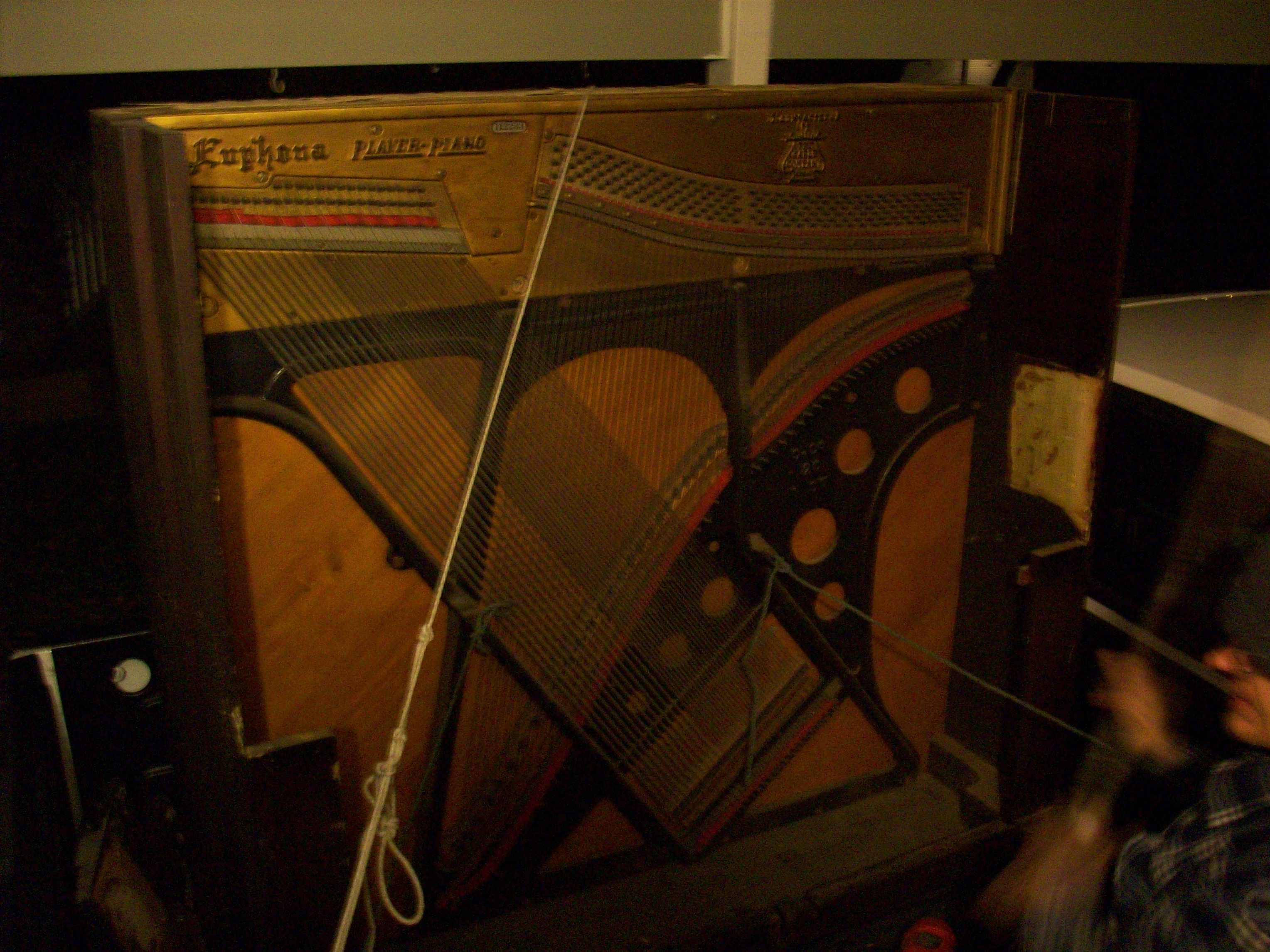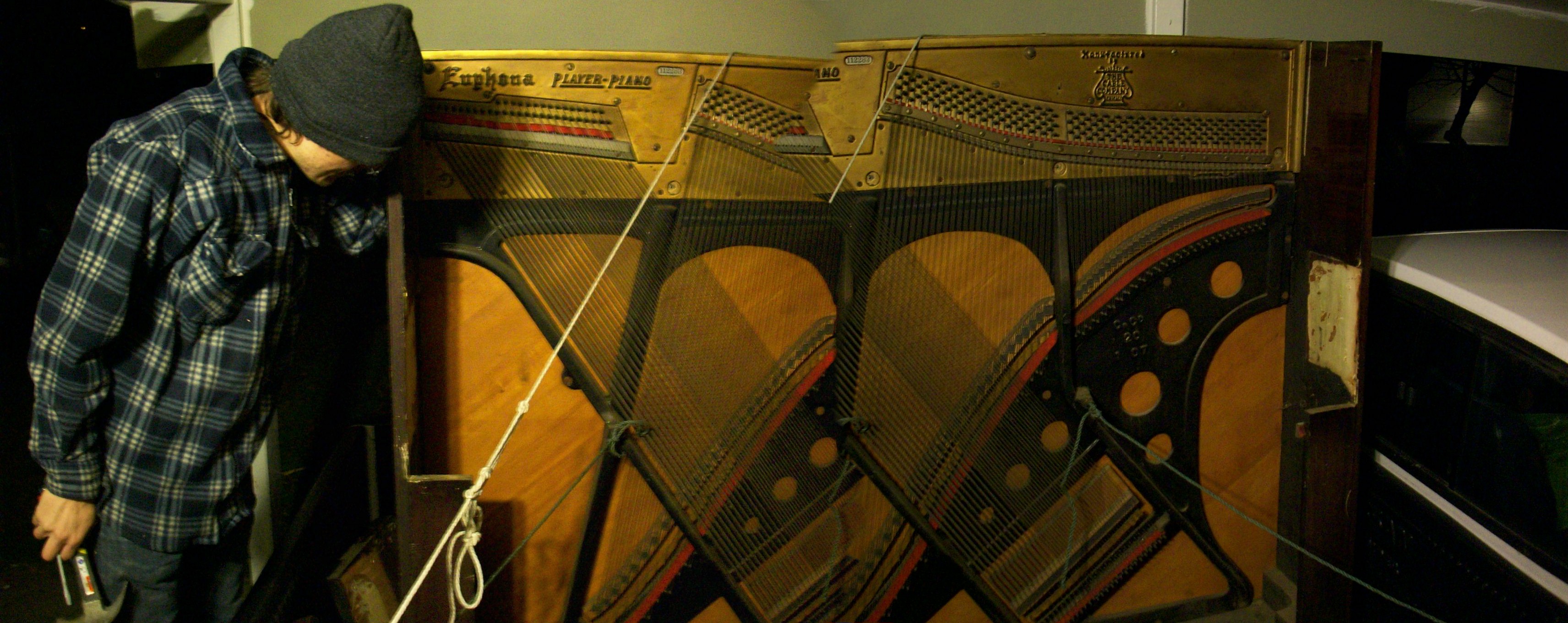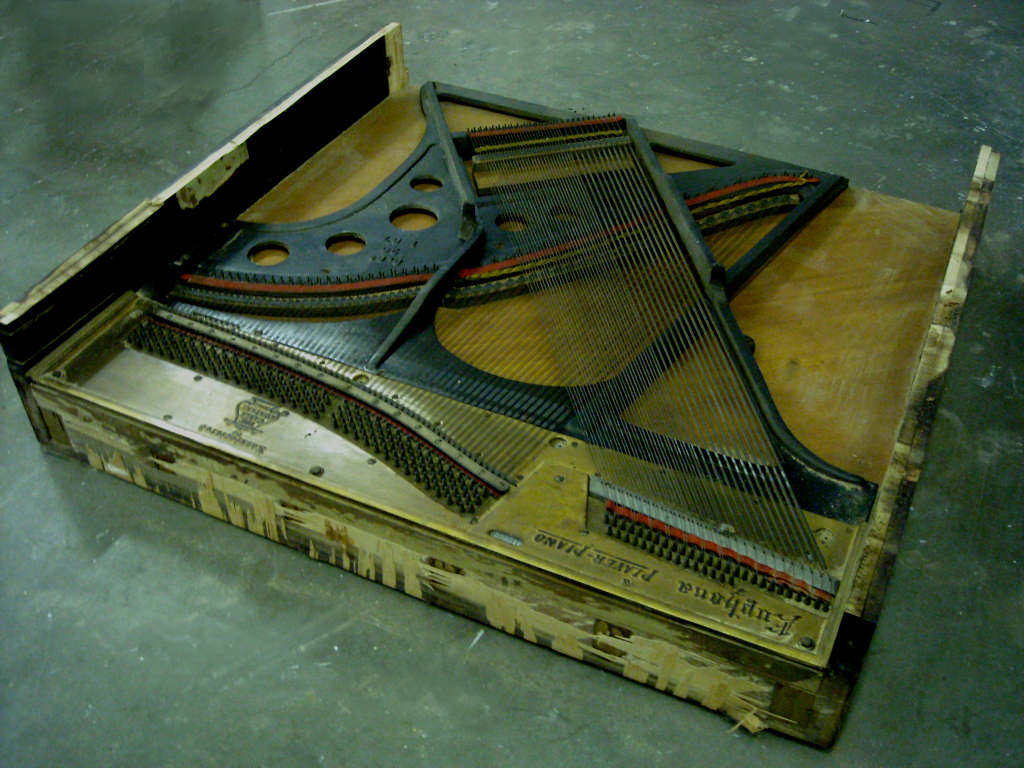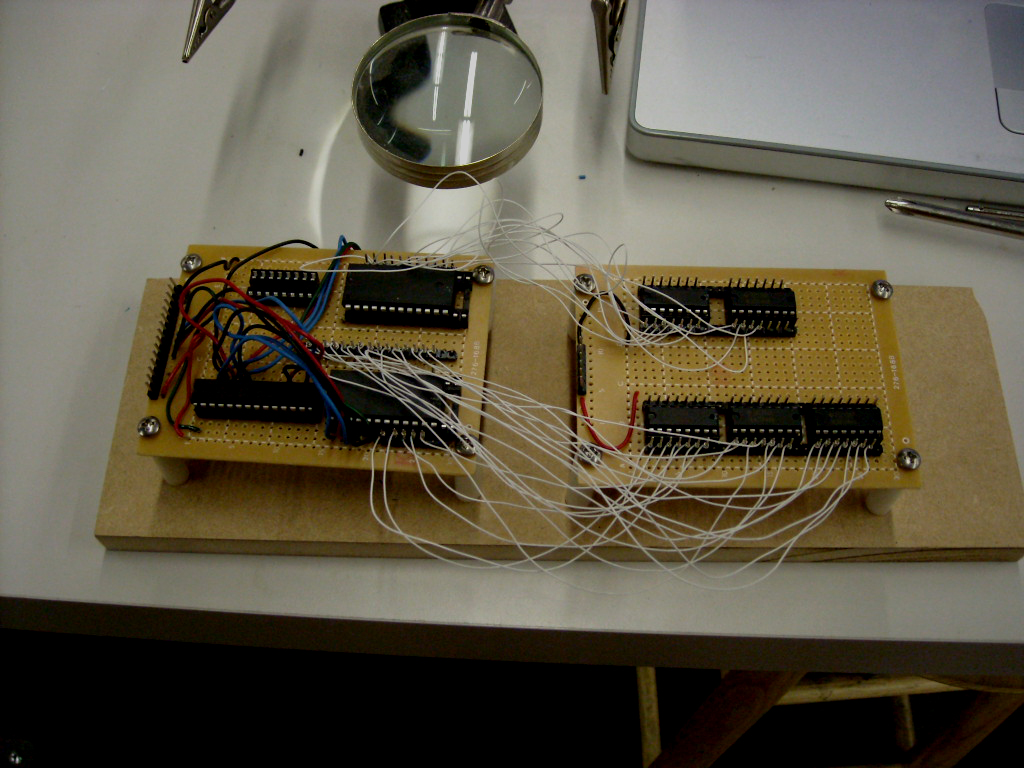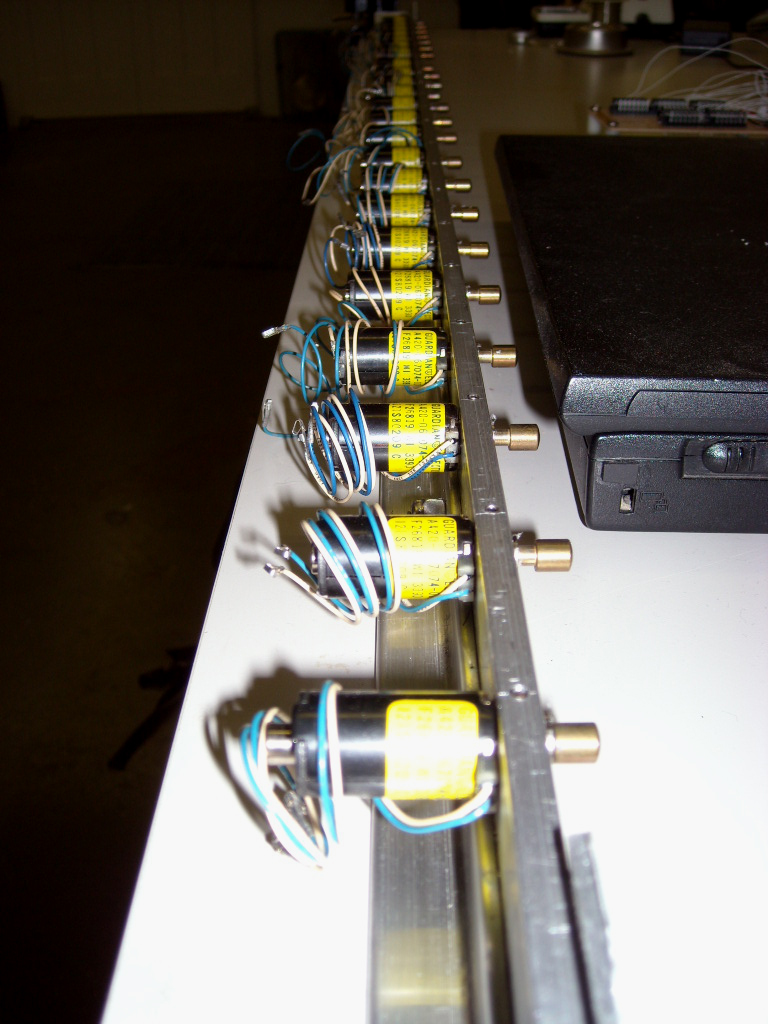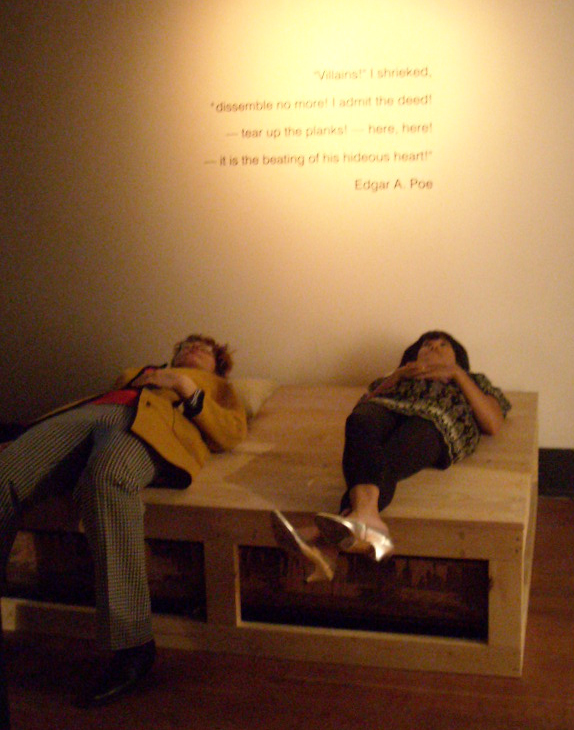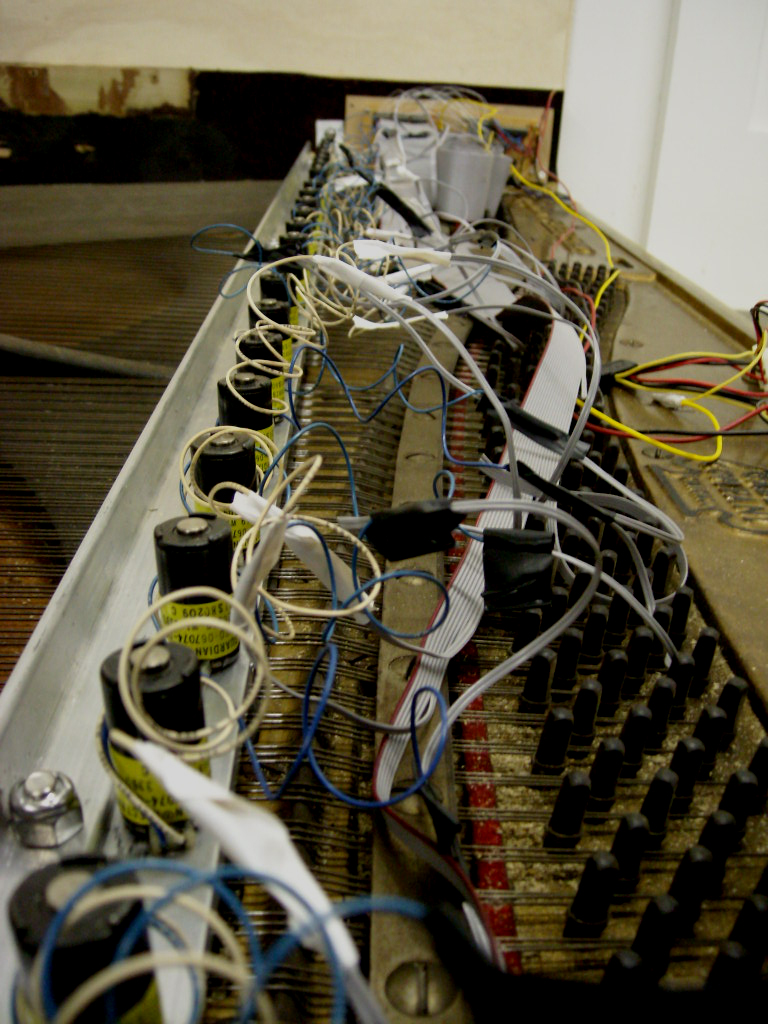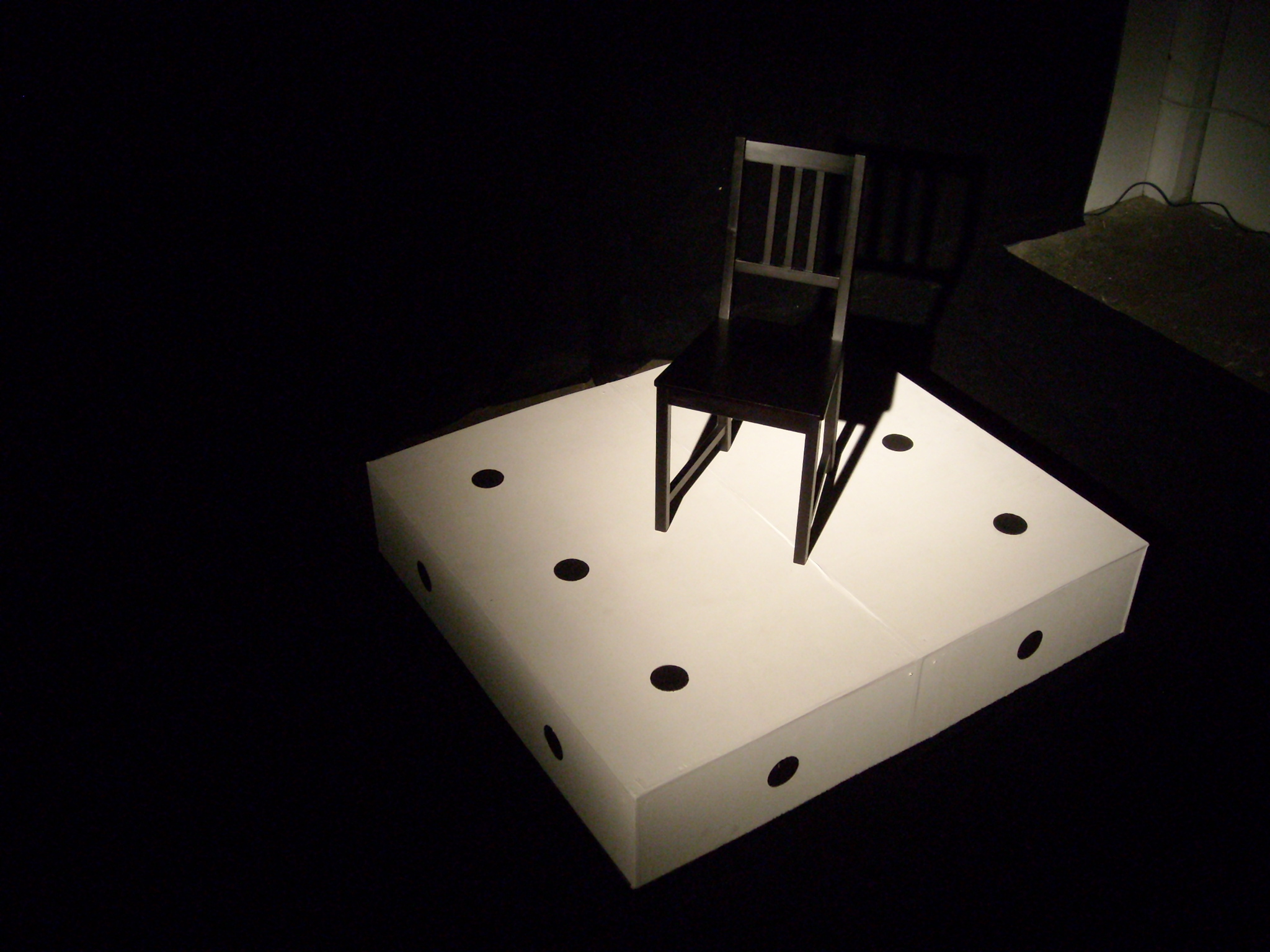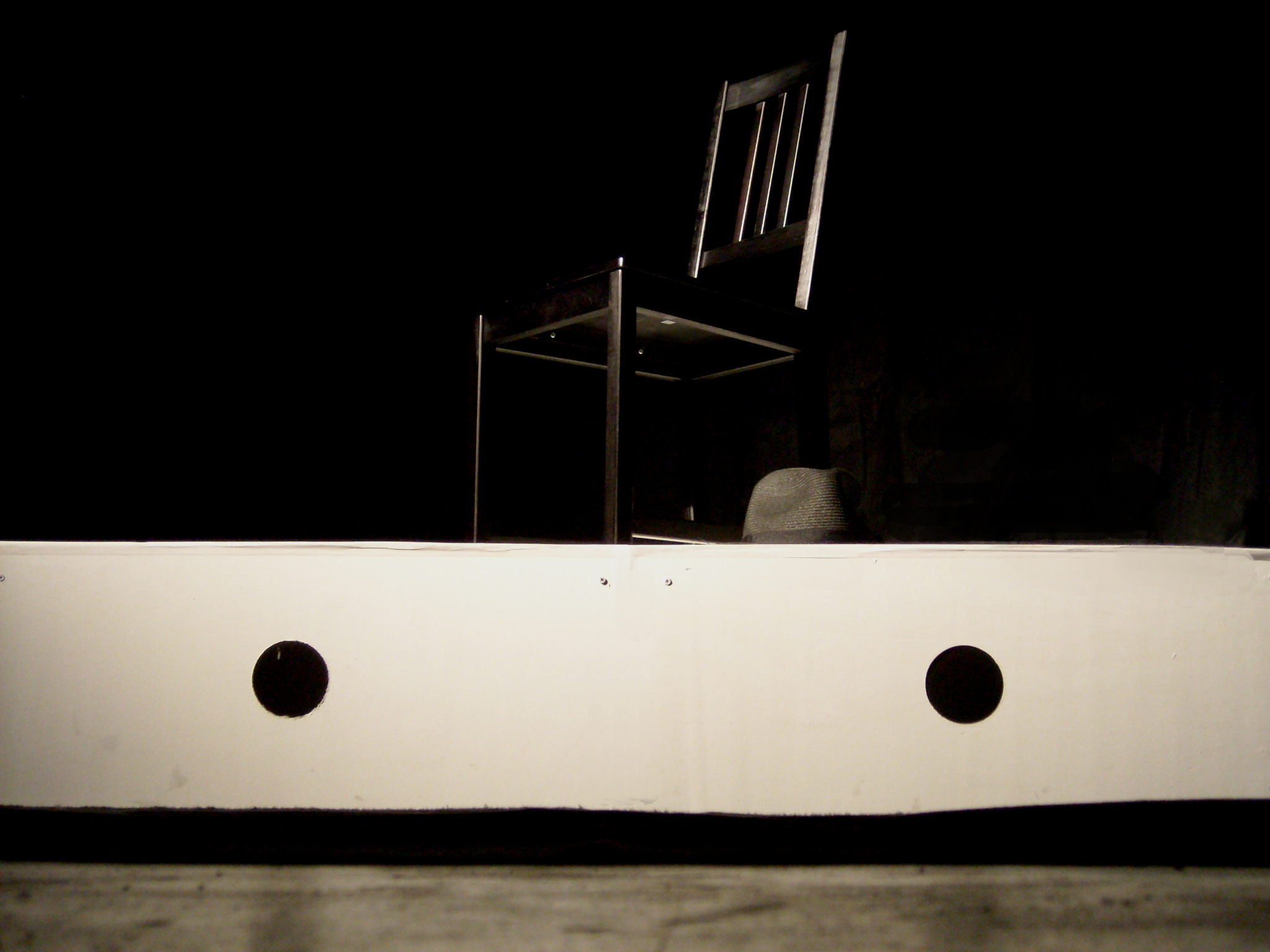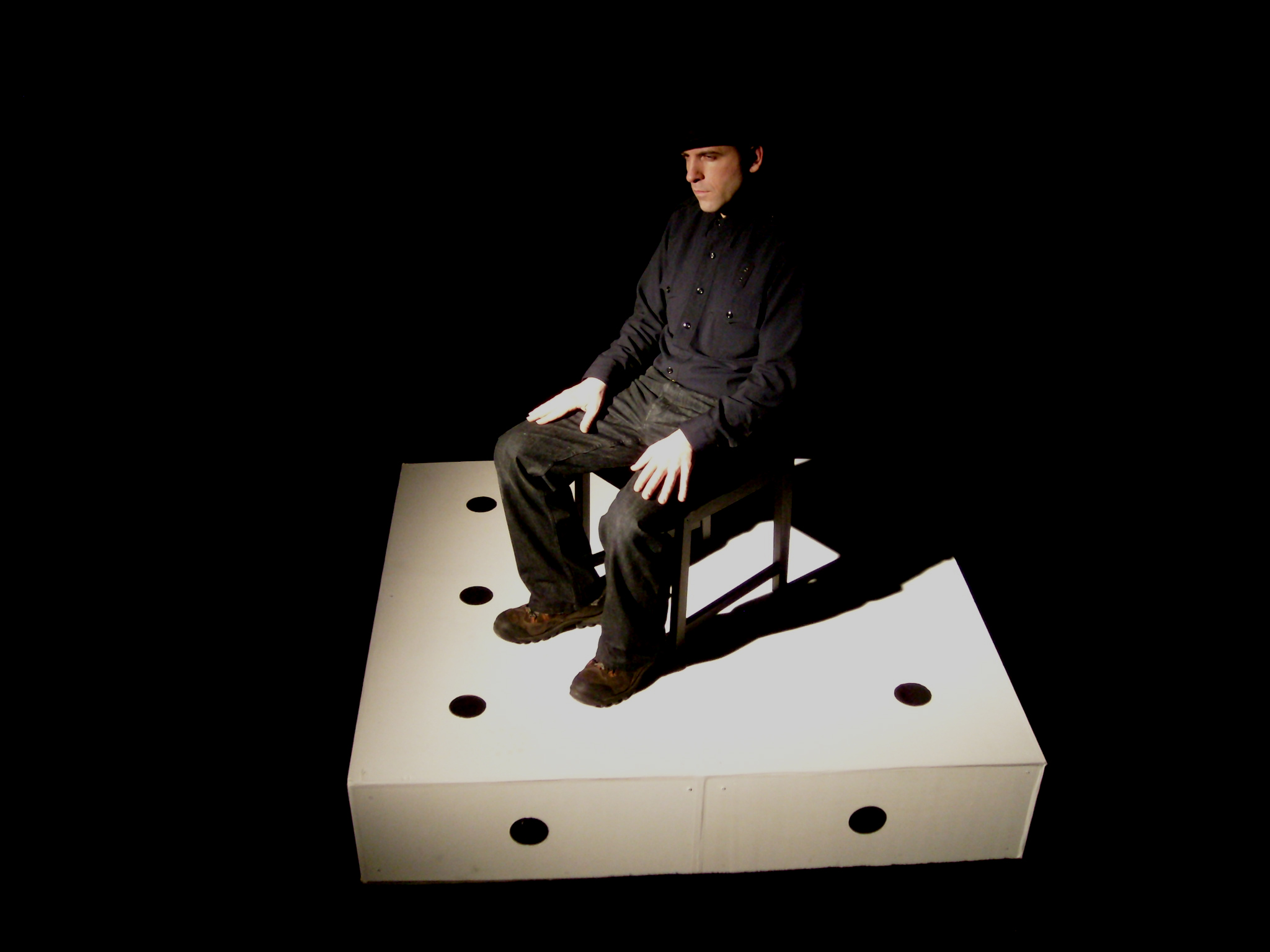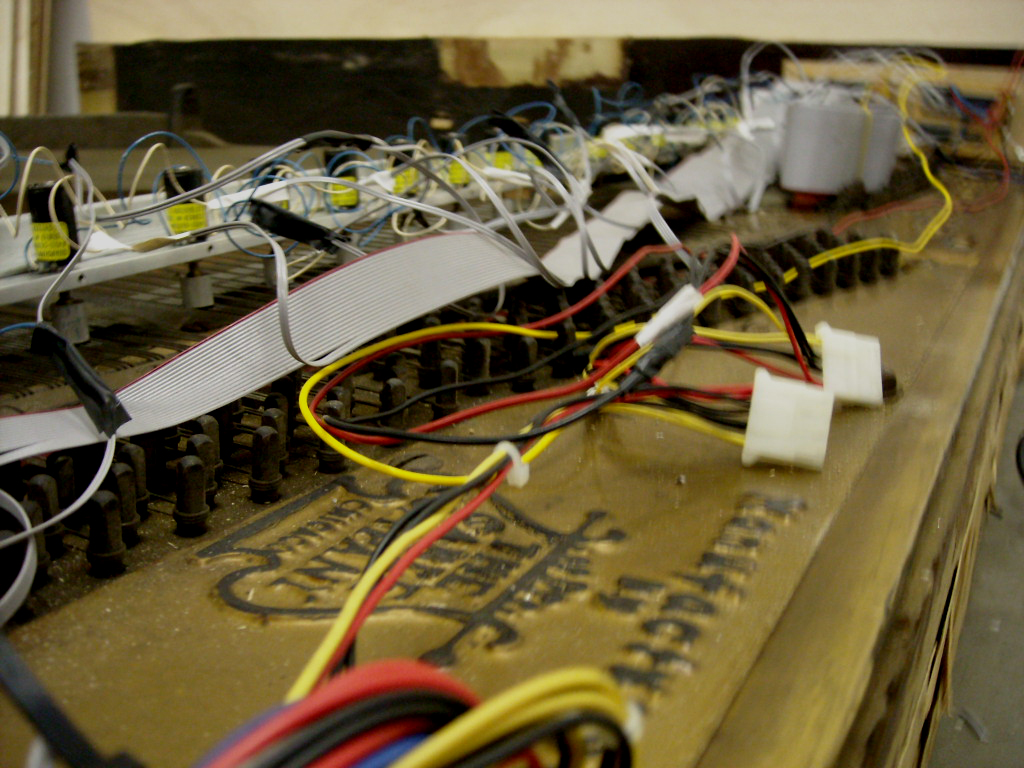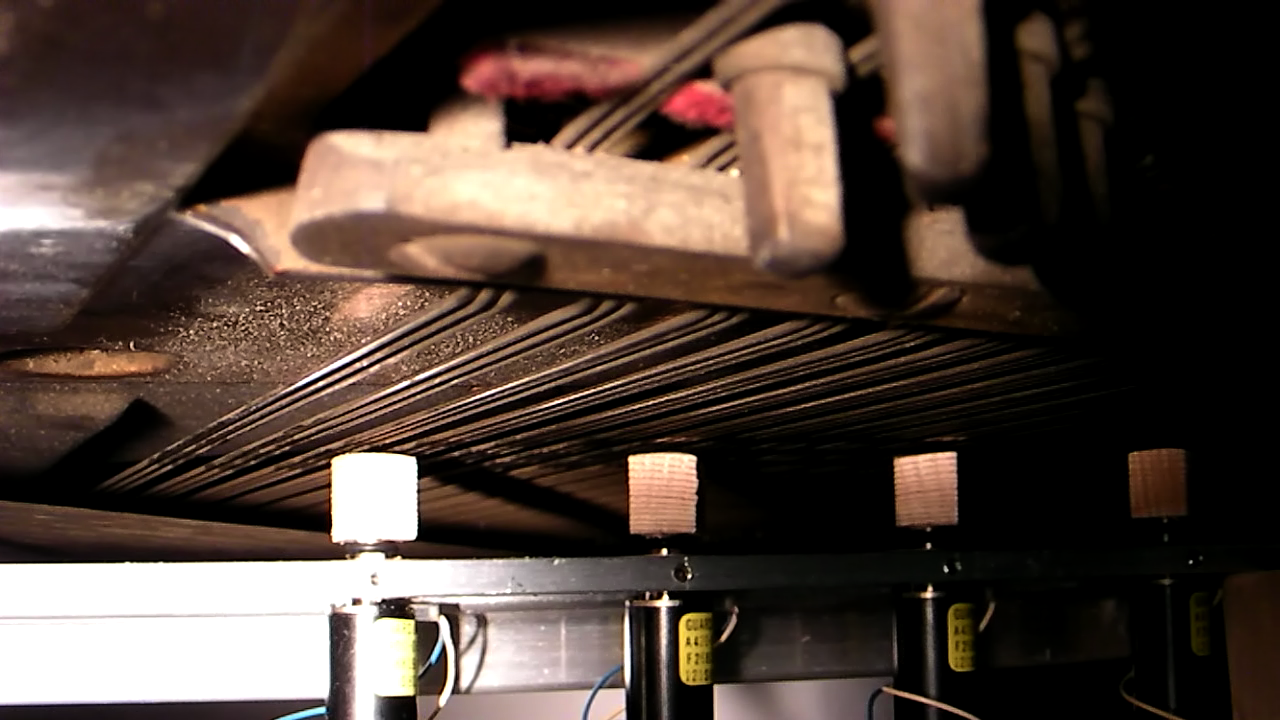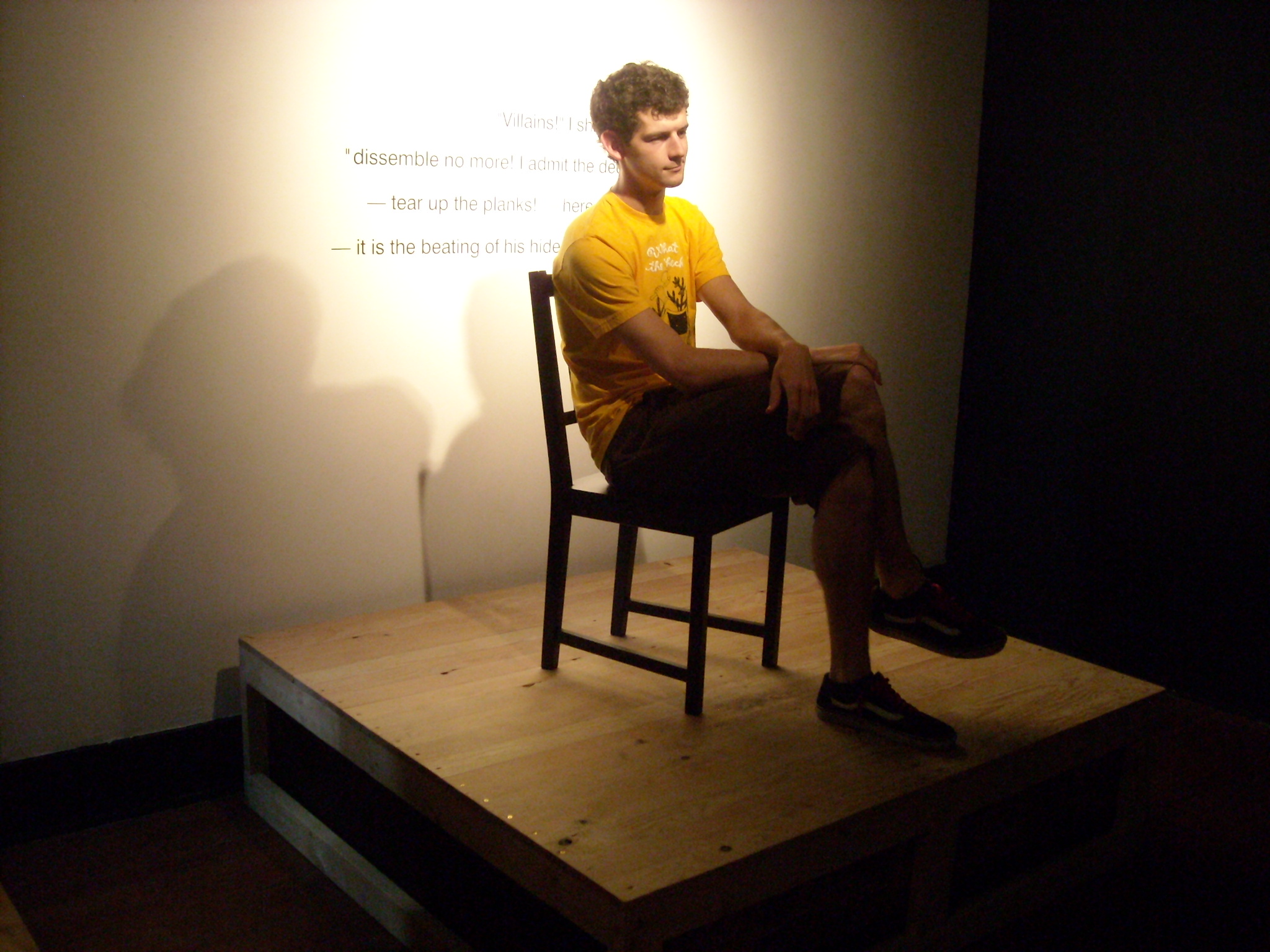Tell Tale Piano
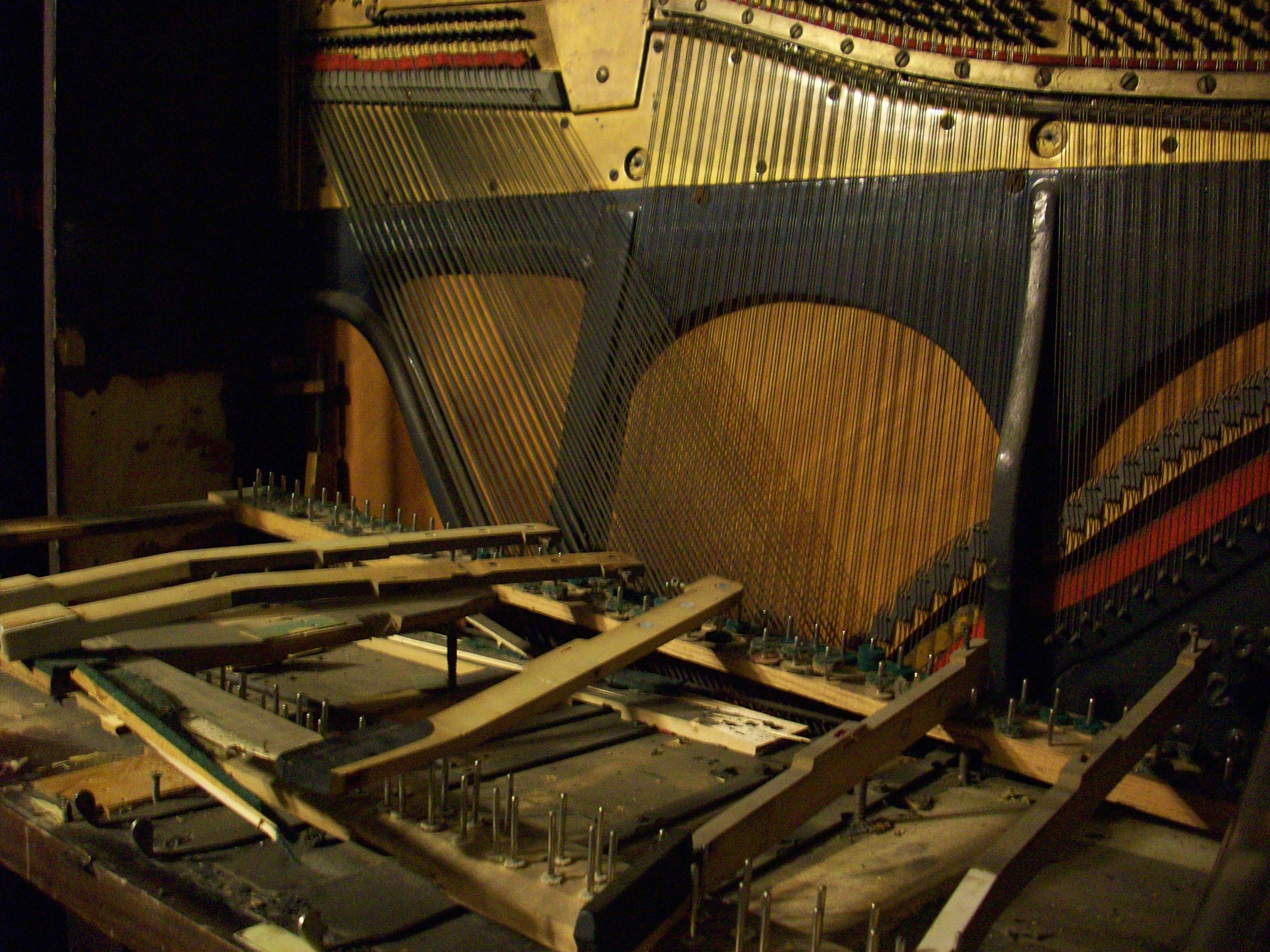
In The Tell-Tale Heart, Edgar Allen Poe describes how the narrator's character kills the old man he lives with, how he hides the dismembered body in the scantlings of the chamber, and how he confesses the murder to the police after still hearing the beating of the old man’s heart coming from the underfloor where the body is hidden.
While not programmatic, this work –the installation and the musical composition- is based on Poe’s story and uses an old acoustic upright piano electronically and mechanically augmented for representing the sonic imagery described in the writing.
The journey of transforming the old useless piano –obtained for free as trash- into a sound installation, which the audience is invited to sit over, was itself a story of dismembering a “body” in order to keep the instrument alive and “beating”.
The piece was composed with layers at different tempos as homage to the American- Mexican composer Conlon Nancarrow who renewed the meaning of player pianos with his set of studies. The piece of seventeen minutes contains three sections, on each one a different texture is created. On the first part non-stable masses of sound are created by over imposing layers of fixed tempos at different ratios that gradually and slowly diphase producing different patterns on each cycle. On the second section a dramatic aggregation is created by gradually adding faster and faster rhythms. On the last section, a game of subtle over imposing of layers in constant accelerando or ritardando produces again gradual changing patterns.
Perceptually, one goal of the work is to make people perceive the production of sound coming from beneath, helping not only to hear the work, but also to feel it with the feet and lower body.
